| Polish WW II graves in Western Europe
Polish WW II graves in Western Europe are marked by crosses and headstones which vary greatly in shape and material. This are a number of reasons for this phenomenon.
When Polish units liberated a particular area, regimental units, colloquially called "Łapiduchy" (soul-catchers), were despatched to search for soldiers killed in action. They identified the dead by means of nametags which soldiers wore about their neck.
 Identification Tags
Identification Tags
The dead were buried in linen bags and the graves were marked by a provisional iron, aluminium or wooden cross. Sometimes burial took place on the very spot where a body was found. But the dead were also buried in existing cemeteries, if this was feasible.
 Polish War Grave with temporary iron cross.
Polish War Grave with temporary iron cross.
The regimental chaplain was in charge of the burial ceremony and drew up a death certificate, the 'Metryka Zgonu', which he sent to the Chaplain General of the Polish Forces in London, who in turn notified the next of kin via the Red Cross. This certificate mentioned among others the geographical coordinates of the grave.
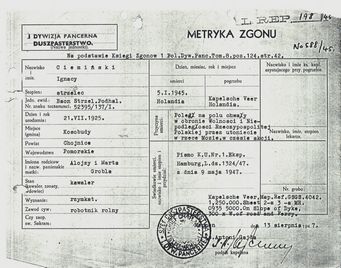
click on map to enlarge
After hostilities had ceased, British or Canadian "Grave Registration Units" (GRU) entered the battle area. These administrative troops registered all Allied graves which they found, and if necessary planted new metal crosses on the graves.
Subsequently British or Canadian so-called "Grave Concentration Units" (GCU) appeared on the scene - sometimes years later. Their task was to assemble spread out field graves into new or existing war cemeteries. Examples of this procedure are the Polish war cemeteries in Langannerie (France) and Lommel (Belgium).
Until that moment, all activities were carried out under the auspices of the Allied military command. However, from then on care for the graves was entrusted to a civilian institution, which is now known under the name "Commonwealth War Graves Commission" (CWGC).
However, this caused a number of problems as far as Polish war graves are concerned.
The CWGC took its mandate very literally and since the Polish soldiers were not Commonwealth citizens, did not take care of Polish graves.
This meant that concentrations of Polish graves like at Langannerie (France), Lommel (Belgium), plots in the the Netherlands at Breda, Axel, Oosterhout, Alphen and a number of sites in Germany were not looked after.
Eventually, the French government took over the care for Polish graves in Langannerie. These arrangements meant that the Polish graves at Langannerie are marked with concrete crosses of the type that the French use for all their war graves.
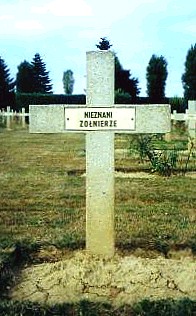 Polish War Grave in care of the
Polish War Grave in care of the
French Government
At Lommel, Belgium, the Polish graves are cared for by the Polish government in Warsaw. The Polish government placed new natural stone crosses on all Polish graves, in the year 2000.
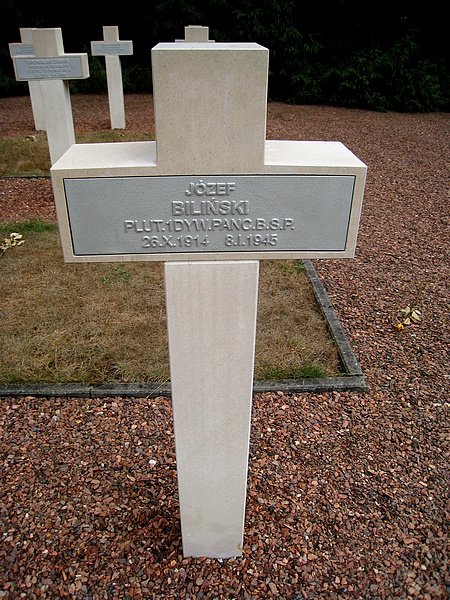
New headstone at Lommel (2009), Belgium.
The Polish war graves which are supervised by the Dutch War Graves Commission are marked with crosses of decorative concrete with copper lettering. The top of the crosses belonging to killed members of the 1st Polish Armoured Division bear the divisional emblem which alludes to the Battle of Vienna in 1683.
All other Polish war graves are adorned with the Polish eagle and crown. This was done at the special request of the (Roman Catholic) Polish War Veterans. Normally, war graves under Dutch care are marked with tombstones made of natural stone.
In the Netherlands, the government handed the Polish war graves over to the "Netherlands War Graves Foundation". Internet: www.ogs.nl
 Polish War Grave in care of the
Polish War Grave in care of the
Netherlands War Graves Foundation
Polish war graves which were incorporated in British and Canadian military cemeteries remained there. The graves are being taken care of by the CWGC but they are not listed in the Registry of Cemeteries. These graves bear headstones of different shapes depending on nationality. The centre of the Polish tombstones is adorned with the Polish eagle and crown.
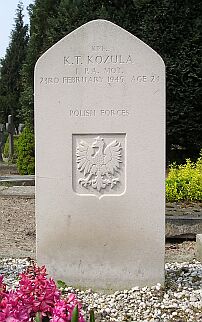 Polish War Grave in care of the
Polish War Grave in care of the
Commonwealth War Graves Commisssion
There are also Polish war graves which are maintained outside official institutions. They are mostly situated on church cemeteries.
In Germany, crosses and tombstones of a wide variety are used on Polish war graves. There are still many problems with Polish war graves in Germany.
See website www.cmentarze.de in both Polish and English.
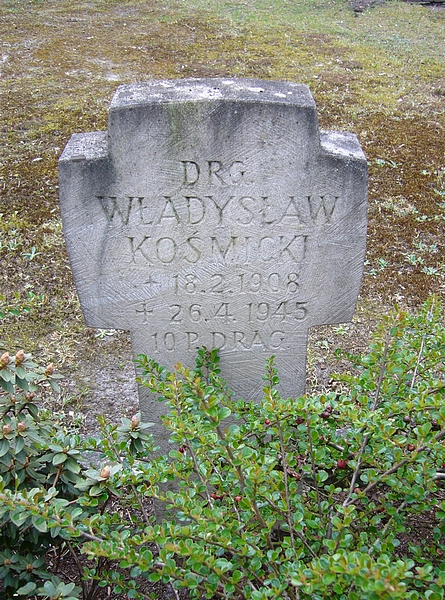 Polish War Graves at Flachsmeer, Germany
Polish War Graves at Flachsmeer, Germany
|